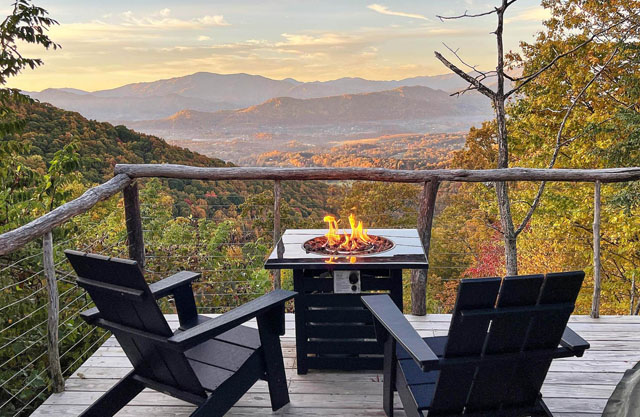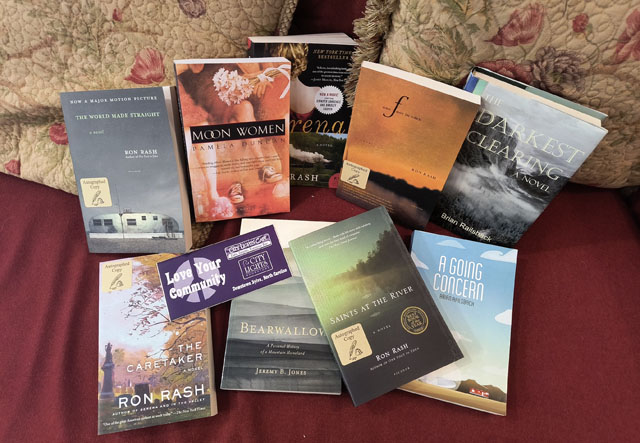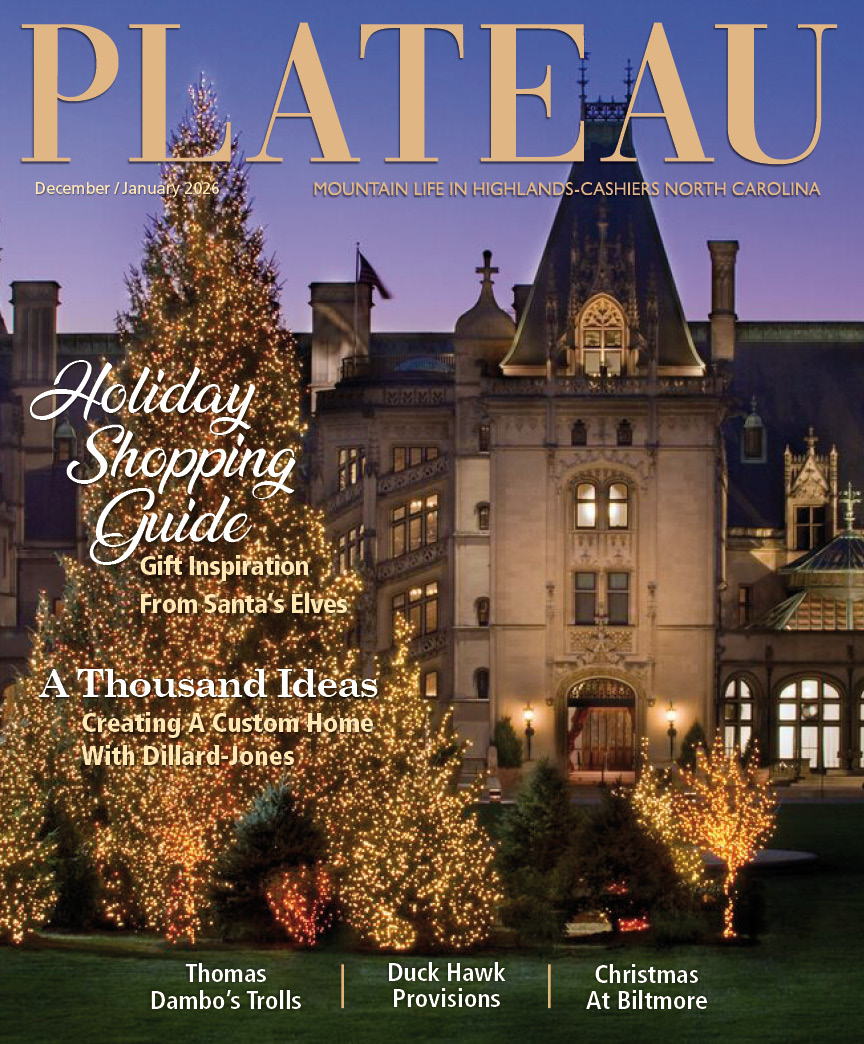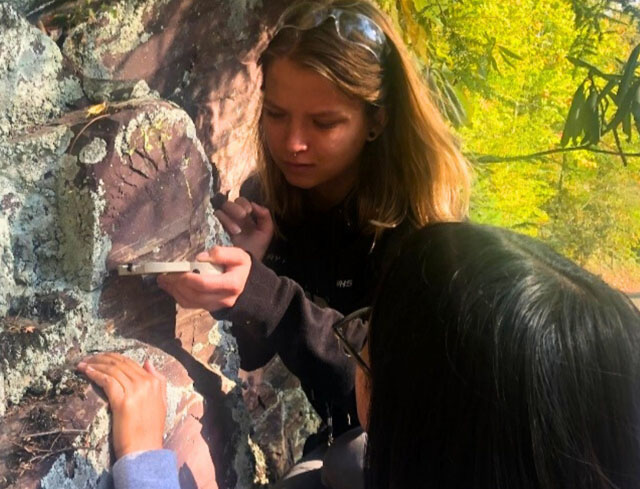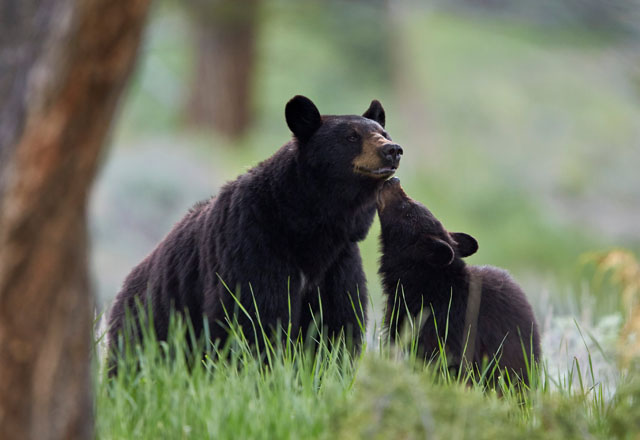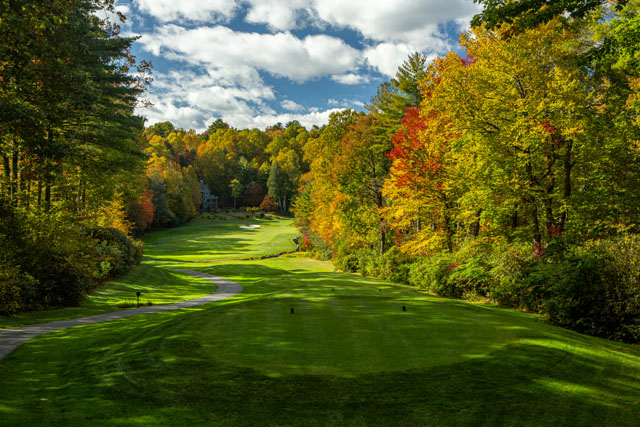A Long-Term Conservation Option for Landowners
03 Jun 2025
Protecting your land and property into perpetuity
June-July 2025
Written By: By ANDREW RENFRO, LAND CONSERVATION DIRECTOR at the Highlands-Cashiers Land Trust
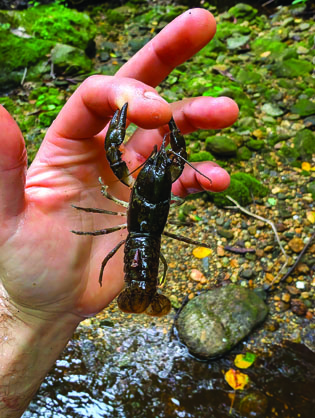

I have been surrounded by the incredible diversity of plant and animal life on the Highlands – Cashiers Plateau and the Blue Ridge Escarpment for most of my life. Over the years, I realized life can be broken down into a series of choices, each with an impact. Frequently, the most impactful choices are those in relationship with the land. We are not alone in calling this place home. Our choices and decisions, be they good, bad, or ugly, can impact every living thing here. Though some impacts are temporary, some are like an open wound, causing irrevocable harm. And some practices, such as those of settlers more than 200 years before us, continue to have consequences that take generations to mitigate.
Land conservation on the Highlands-Cashiers plateau can frequently be challenging given real estate values and the economic incentive to maximize profit through development. Nonetheless, 2024 was an eventful year for the Highlands-Cashiers Land Trust (HCLT) as it acquired significant new land to protect in perpetuity. Irreplaceable and unique, these new tracts will be stewarded by the HCLT as wild places to be left untouched, helping preserve the region’s biodiverse habitat. For me, two acquisitions last year stand out: one outside Highlands and the other just south of Cashiers.
Driving to the Glen Falls trailhead, less than 10 minutes south of Highlands on Hwy 106, the newly named Heavenly Peace Preserve is on the left. Lush acidic cove forests rise before transitioning into a highly diverse and uneven-aged montane oak-hickory forest. Though HCLT has not yet cored any trees to count their rings, 1954 aerial imagery tells us this tract has been heavily forested for over 75 years. While unlikely to be primeval old-growth, meaning it escaped the clear-cut logging and splash dams from the turn of the 20th century, these forests have been allowed to naturally regenerate for nearly 115 years. They now emulate the characteristics of an old-growth forest and are home to biodiversity lost elsewhere across much of Western North Carolina.
An uneven-aged forest consists of trees of varying species and ages. It includes everything from young trees, wildflowers and shrubs, all rushing to claim territory in the light allowed by last year’s wind-blown canopy gap, to white oaks that have stood and watched wildlife roam across these mountains since before we were born. These forests are special and old, which in today’s world is increasingly rare. Choices made in a forest such as this could have disastrous impacts not only for the critters who live in Heavenly Peace Preserve, but also for everything downstream heading into the Blue Valley Wilderness Area of the Nantahala National Forest.
Flowing through the Heavenly Peace Preserve, before cascading down Glen Falls, is roughly 4100 feet of the East Fork of Overflow Creek. North Carolina’s Department of Environmental Quality classifies this tributary to the Chattooga River as “Outstanding Resource Waters.” The East Fork of Overflow Creek is home to abundant, diverse plant and animal life, many of which cannot exist without cool and clear mountain waters. Here, brook trout slurp on stoneflies and chase sculpins. Stones and beneficial cobble, largely unencumbered by excessive sediment and sand allow salamanders to meander among the intact stream banks and upslope forests that are home to other residents such as eastern copperhead snakes. This stream, somewhat free of sedimentation from erosion, demonstrates how pristine waterways encourage biodiversity.
The conservation ethic and generosity of two neighbors saved this more than 55-acre tract from being subdivided into a tiny house development. They purchased the property from the long-time family owners and donated it to HCLT, preventing the maximization of “highest and best” real estate economic value that would have forever changed the area's character. Instead, today, we have the Heavenly Peace Preserve, a biodiverse oasis.
Sometimes land protection is an act of patience, as we see with HCLT’s 2024 acquisition of the Twigg Tract, a 100-acre parcel surrounded by USFS lands at the toe of Terrapin and Coldsides Mountain. Given an overall rating of “Very High” on North Carolina’s Registered Natural Heritage areas, this property has been on HCLT’s radar for over 10 years. Almost five miles south of the Cashiers crossroads, the Twigg Tract is visible from the summit of Whiteside Mountain. Thanks to The Leuthold Family Foundation and HCLT’s Wildwood Fund supporters, the Twigg Tract is protected and will be stewarded into perpetuity.
This place is one of the wilder places I have been fortunate to explore. It is home to pristine headwaters of the Chattooga River, absent upstream development. To the west, the South Fork of Fowler Creek flows out of United States Forest Service (USFS) land. To the east, the Chester Branch flows. These watershed creeks and seeps are what water should look like in southern Appalachia.
Here, water remains crystal clear, even after a “gully buster” of a rainstorm. Meanwhile, after a heavy rain, Norton Creek and the Cullasaja and Horsepasture Rivers resemble chocolate milk due to ill-advised upstream choices. Grass does not hold stream banks or water as nature intended here in southern Appalachia. Sedimentation from poorly engineered gravel roads and silt running off construction sites are not the only choices we make that alter our environment’s natural state. Individual landowners unknowingly damage sensitive waterways to “improve” their property.
The Twigg Tract features a deep ravine with cliffs and grottos rising from creeks and seeps, revealing a diversity of ecosystems. Mature chestnut-oak and red oak forests dominate the ridge line, dotted with rocky outcrops and boulder fields. This place is home to some truly rare and irreplaceable inhabitants, such as the state-endangered Lysimachia fraseri, Fraser's yellow loosestrife.
Fortunately, like Heavenly Peace Preserve, the Twigg Tract will be managed as a wild place with no trails, parking lots, or roads—only wilderness—allowed to be, just as it has been for over a century. Meanwhile, one ridge over a USFS timber harvest at Brushy Mountain is a visual reminder of what could have been the fate of this now-protected land.
A long-term conservation option in fee simple title or via conservation easement is one of the best ways to achieve permanence in conservation. It allows landowners to protect a place and for it to remain wild into perpetuity. Many of the HCLT properties have been generously donated by individuals and families. However, in some instances, groups worked together to raise funds for land purchases. Concern for the environment runs deep in our community and is vital to our success.
We welcome you to learn more about what we do and how we accomplish our land acquisition goals. Visit hcltnc.org for information about becoming a volunteer, registering for a class, or learning how you can help us identify and acquire significant land tracts. To learn what lands are currently in the trust, visit www.hcltnc.org/conserved-properties.

